
Are there any artists in your family? While researching the Knight family tree, I try to learn what makes each person unique. A few questions often come to mind…
- What did they love to do?
- Did they pursue their dreams?
- What were their talents?
- Were they creative?
I discovered that some relatives were very creative – becoming professional storytellers and artists.
This post focuses on the creative side of the Knight family – featuring painters, book authors, illustrators and photographers.

How rare are artists?
The NEA’s 2019 Survey of Artists and Creative Workers estimated that there were around 2.1 million individuals who identified as working artists in the USA. This includes a wider range of artistic disciplines but probably includes those who may not consider themselves “professional” in the stricter sense.
Visual artists, professionals who are painters, sculptors and craft artists, represent only 0.13% of the working population in the states. That’s about 1 in 1,300 workers. That’s pretty rare. Although a small number, this is almost 4x the number of professional athletes (13,700).
How many fine artist in the family?
Based on the stats above, I would expect to find about 6 professional fine artists in my family tree (> 5,000 members). This excludes the many talented part-time and hobby artists in the family.
Poster art by cousin Pauline Baynes
Creative Cousins
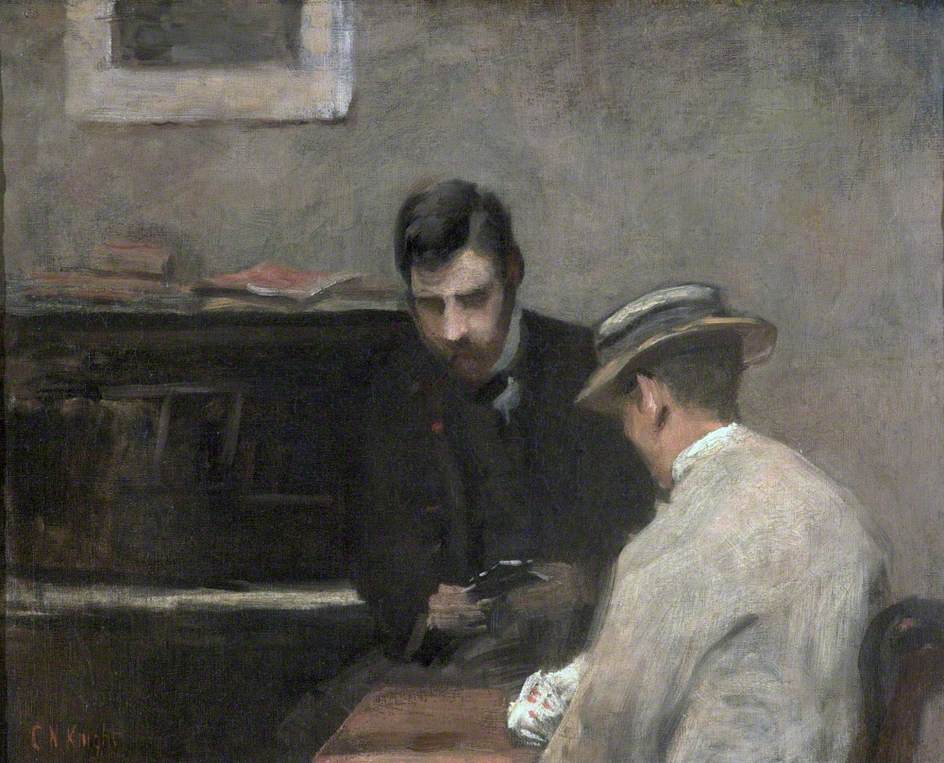
Artists are rare, but I did find some creative talent in the family. Typically, when I hear that someone is an artist, the phrase “starving artist” comes to mind. However, these family members were very successful artists.
– Pauline Diana Baynes – illustrator of children’s books
– Charles Neil Knight – painter
– Leon Kubala – photographer
– Henry Robertson – watercolor painter
– Samuel Manning – artist and adventure travel writer
– Edwin S. Hope – illustrator
– Henry Radford Hope – Art Department Chair
Pauline Diana Baynes – Book Illustrator
Surrey, England (1922–2008)
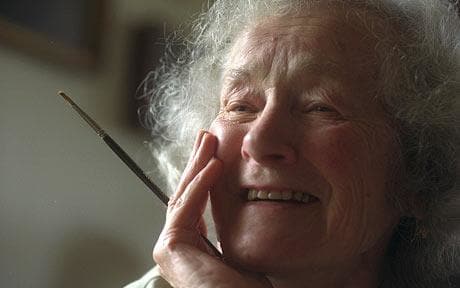
Illustrator of Children’s Books
Pauline Diana Baynes created numerous drawings for C.S. Lewis and J.R.R. Tolkien. Baynes drew all of the artwork for The Chronicles of Narnia and for many of Tolkien’s books.
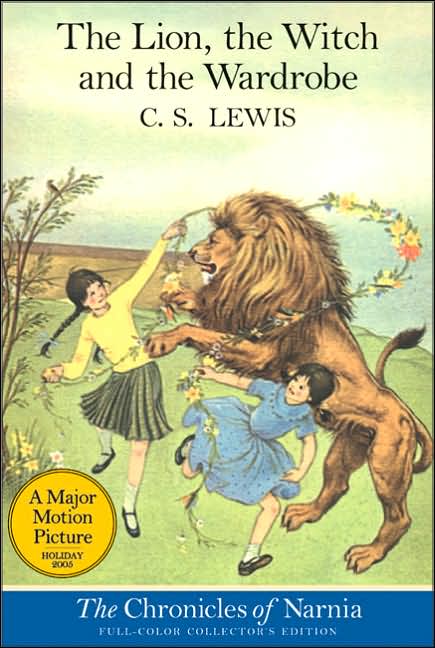
She had a special talent for bringing the author’s imagination to life. The colorful maps that she drew by hand are stunning and show her skills in map making honed during WWII.
Pauline Baynes’s creative artwork included many Puffinbook covers, notably those for Richard Adams’s Watership Down and for The Hobbit, by J. R. R. Tolkien.
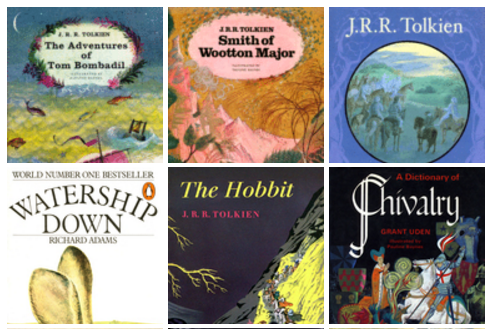
Family Relationship
Pauline Baynes was my 2nd cousin 2x removed.
A Dictionary of Chivalry
Although best known for her Narnia illustrations, Pauline Baynes was a prolific book artist, and arguably one of the greatest illustrators of the 20th century.
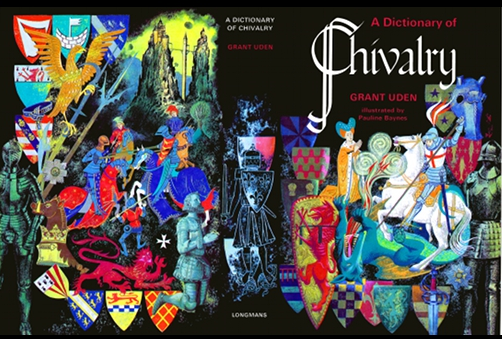
Amongst other subjects, Baynes illustrated many medieval tales, all of which show her painstaking research into the detailing of period costume and architecture, and her passion for recreating the texture and fabric of daily life in different ages. Her greatest triumph in this genre were her almost 600 illustrations embellishing the margins of A Dictionary of Chivalry, a two-year labour that deservedly earned her the coveted Kate Greenaway Medal.
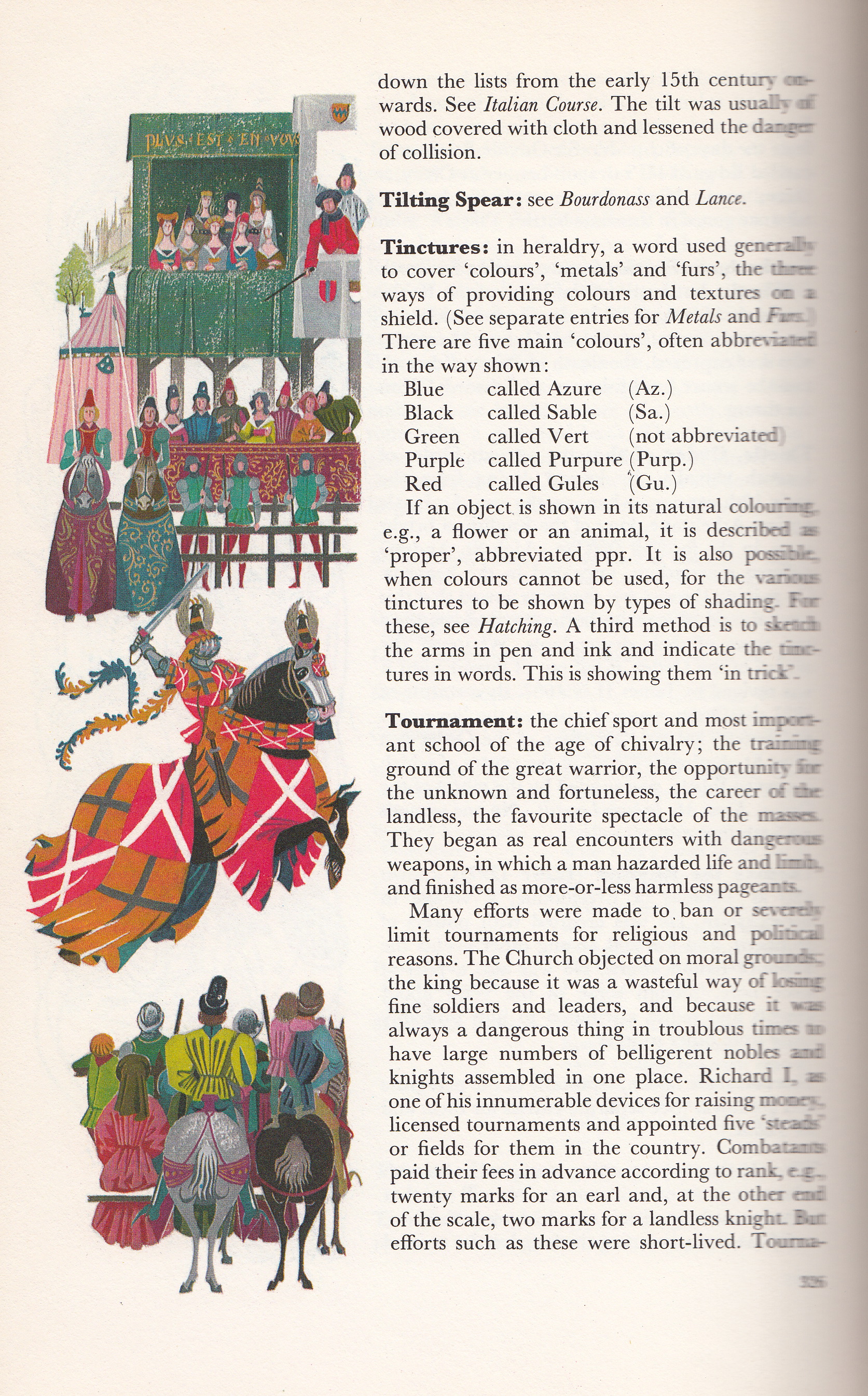
Pauline Baynes (1922-2008). Illustrations for
A Dictionary of Chivalry, by Grant Uden,
pub. Longmans, 1968
Charles Neil Knight – British painter
London/Bath, England (1865-1947)
Charles Neil Knight was born in London to Elizabeth Mary Baillie and John Burgess Knight, soap manufacturer at the Royal Primrose Soaps Works.
Charles, my 1st cousin 4x removed, was educated at Oxford where he earned a B.A. and M.A.
He became know as a painter of scenic landscapes using oils and watercolors. He also painted informal portraits.
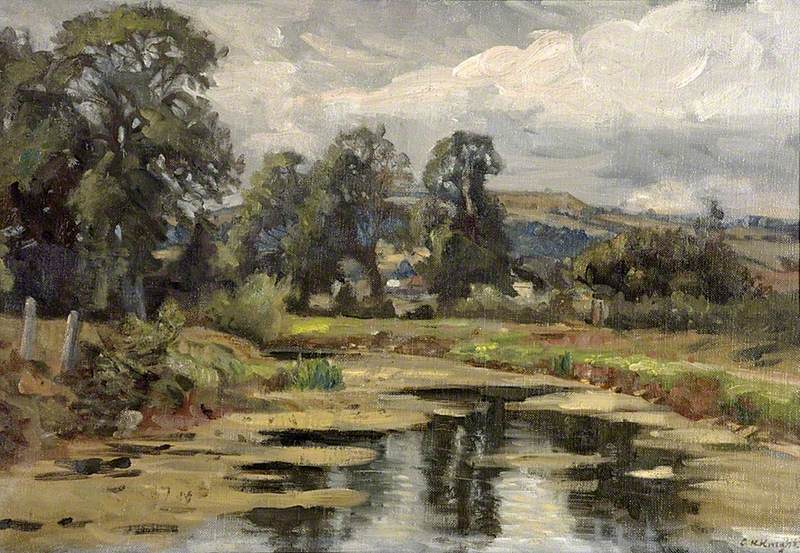
Leon Kubala – Portrait photographer
Seguin, Texas (1913-2006)
Leon Kubala (Kuh-bAA-luh) grew up in a large family, with 8 children, that emphasized learning. His father, Frank, was a public school teacher who taught English. His grandfather, John Frank Kubala, worked long hours on the family farm. Leon wanted a different lifestyle and was interested in photography.
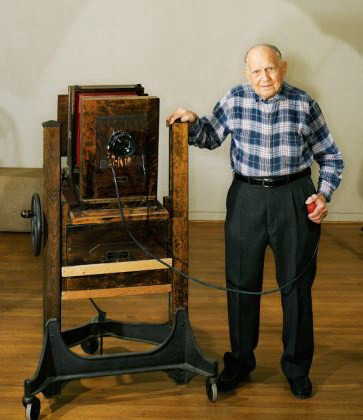
“I got interested in photography and chemistry when I was still a boy,” he recalls. “We lived in the country outside Seguin. Part of our old barn was unused, so I set up a darkroom and lab and started experimenting.” (texasmonthly.com)
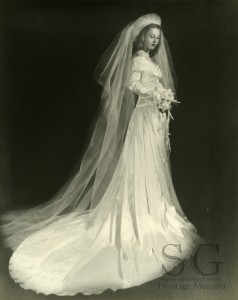
Leon’s Studio
Leon Kubala was a life-long photographer for citizens of Seguin, Texas. Working with his lovely wife Nelda they captured portraits, weddings, graduations and special events. Articles were written about his studio and relationships he developed in the town.
“The Seguin photographer set up shop just off the town square in 1944; soon, with as many as 1,400 sittings a year, he was making not just a living but a prodigious pictorial archive of Guadalupe County’s prettiest town.”
After fifty years of photography, they retired and donated a legacy of over 100,000 images to the local heritage museum.
Henry Robertson – Watercolor painter
Coast of England (1848-1930)
Henry Robertson, a British watercolour painter, was born in Liverpool during the Victorian era. Henry was educated at the Mansion Grammar School in Leatherhead where he won a school drawing prize at the tender age of 11.
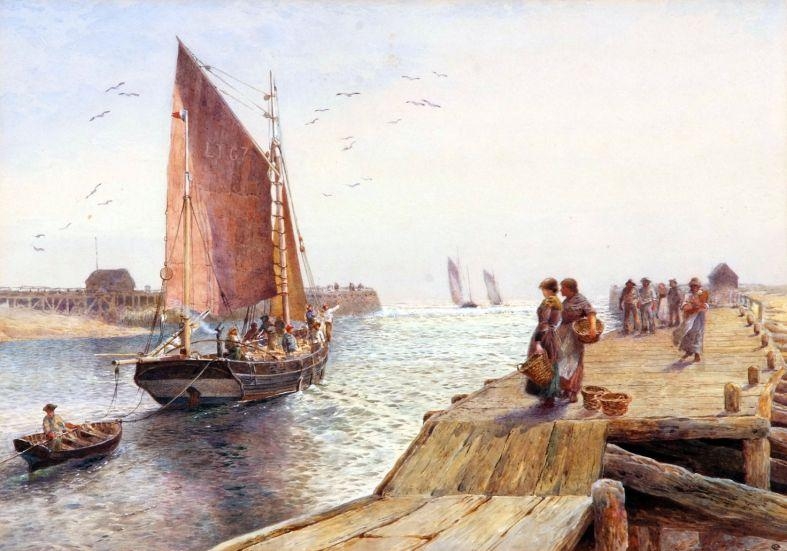
Over two dozen painting by Henry Robertson were sold by Christie’s – British and Continental Watercolours auction – about 10 years ago.
Although these beautiful watercolour paintings aren’t hot collectors items, the artwork does have value at auction – ranging from $300 to $3,000.
Take a look at the common themes, artistic style and colours used by Henry Robertson in the seaside paintings.
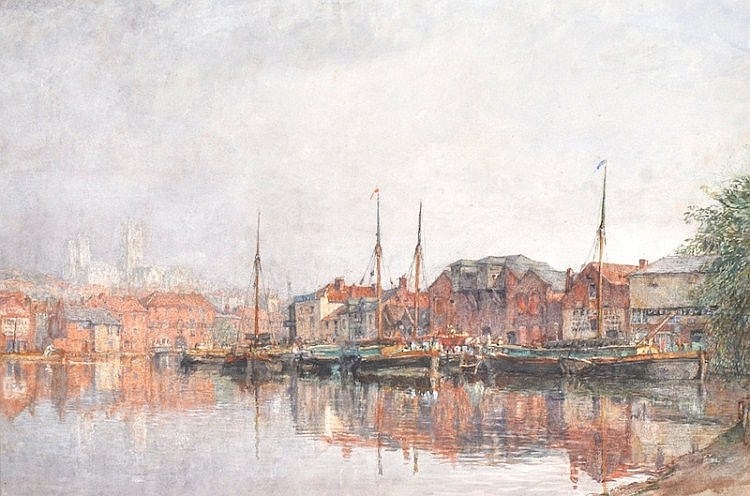
Samuel Manning – Adventure travel writer
Notting Hill, London (1821-1881)
Rev. Samuel Manning, was a well educated baptist minister in England. He married Maria Louisa Hope and they raised six children together.
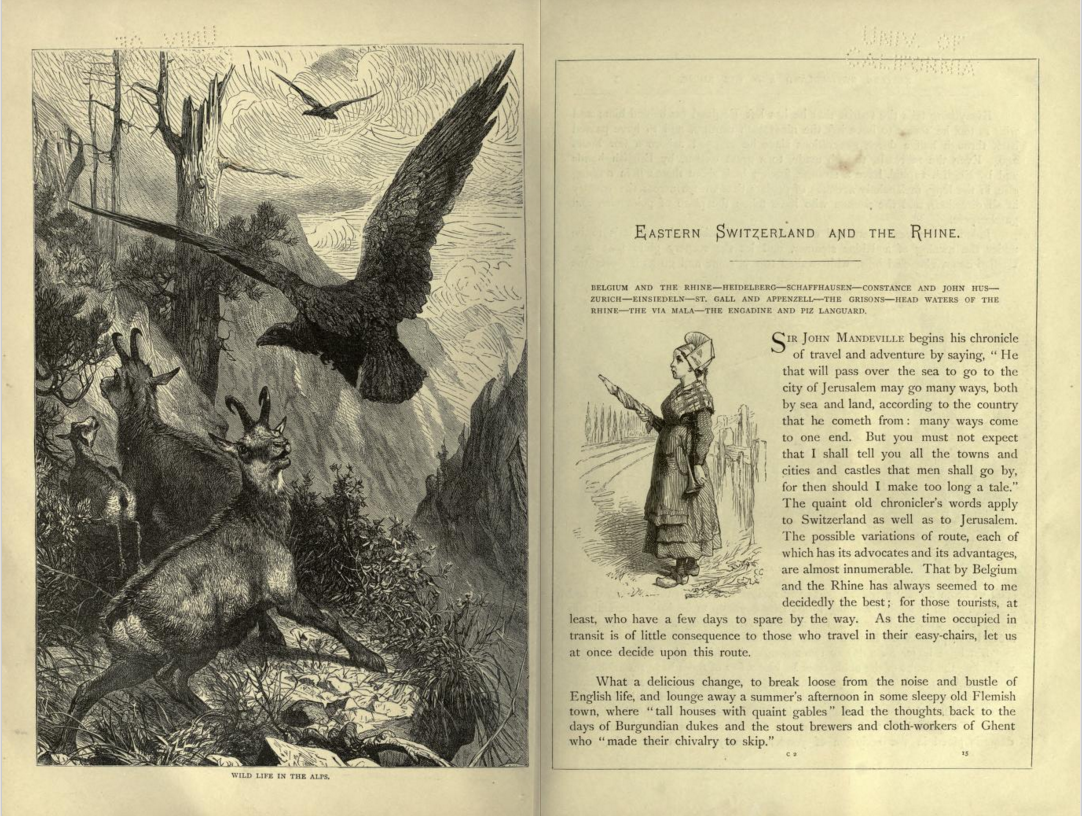
The the family lived for several years in the town of Frome, Somerset where Samuel served as a baptist minister. When he became an editor for the Religious Tract Society near St. Paul’s Cathedral the Mannings moved to the affluent district of Notting Hill in London.
Samuel Manning, my 3rd great-grandfather, was the son of John Manning a businessman who served as the mayor of Leicester, England.
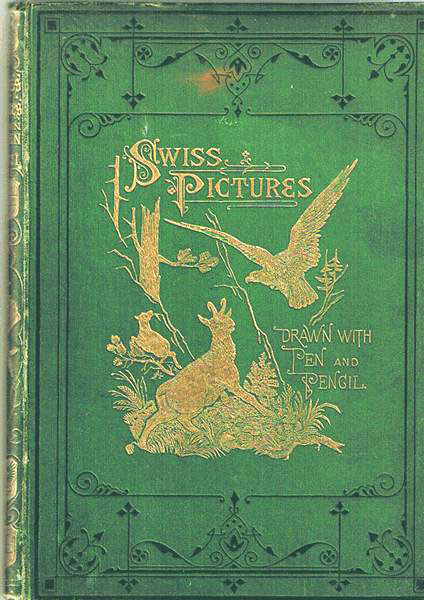
Rev. Samuel Manning was an editor for the ‘Baptist Magazine.’ In 1863 he became the general book editor of the Religious Tract Society. The 1871 census confirms that he was an editor when living in London. He wrote and edited a series of richly illustrated books on America, England, Italy, Spain, and Switzerland that were published in the late 1800s. The picture books were complimented by rich stories of adventure. Certainly, many artists and printing specialists were employed in this business venture.
Edwin S. Hope – Artist and Author
Tottenham, England (1859-1938)
When researching the Hope family, I stumbled upon a beautiful illustration of Natasha by Edwin S. Hope. A little more searching online, revealed that he had a lot of talent, plus an active imagination. Edwin was a creative storyteller.

Edwin mastered his creative writing and artistic talents, over the years, as he became an author, poet, painter and illustrator. Luckily, I discovered examples of his published black-and-white illustrations along with some of his stories and poems. A few examples of Edwin’s creative work is shared in these Hope family notes.
Natasha drawing by Edwin S. Hope for The Angel of the Revolution, book by George Griffith, 1893.
Edwin S. Hope created illustrations for George Griffith’s notable science fiction book “The Outlaws of the Air”. Griffith’s classic adventure novel spotlights the future of aerial warfare and the establishment of a Utopian colony in the Pacific!


Henry Radford Hope – Art Department Chair
Indiana University (1905-1989)
Henry Radford Hope was born December 12, 1905, in Chelsea, Massachusetts. He began his studies at Columbia University in 1925, but left in 1927 to begin work in a cosmetics firm in New York.
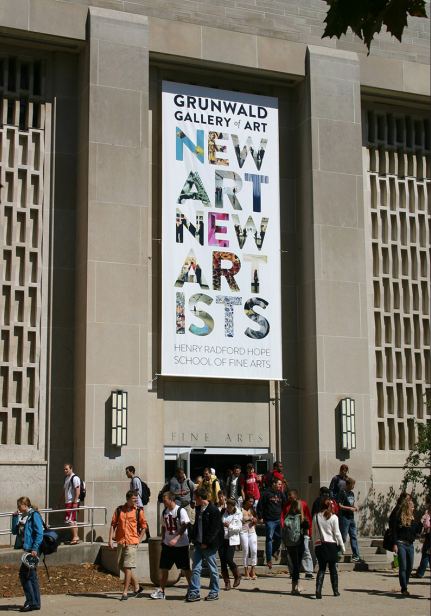
He married Dorothy (“Dotty”) Weil on April 11, 1927 and in 1931 following his contraction of tuberculoses they traveled to Switzerland for him to recuperate.While in Europe, Hope began to study foreign languages and visiting art galleries. He decided to move to Paris, where he studied at Ecole du Louvre (special school for curators funded by the Louvre Museum) in 1936 and at the Universite de Paris (Sorbonne) where he lectured on the history of art from 1937-1938 eventually earning the certificate d’histoire de l’art in 1938 specializing in Medieval art.
In 1938 he returned to the United States and began studying at Harvard, where he earned both his M.A. and Ph.D. in art history. In 1939 he was appointed Assistant in Fine Arts at Harvard and taught art history. He also taught Fine Arts at the Stuart School for Girls in Boston.
Henry Radford Hope was an internationally acclaimed art critic and historian who joined the Indiana University faculty in 1941. His tenure included 27 years as the chair of the School of Fine Arts as well as ten years as the director of the Indiana University Art Museum from 1961 to 1971.
(source: Indiana University Archives)
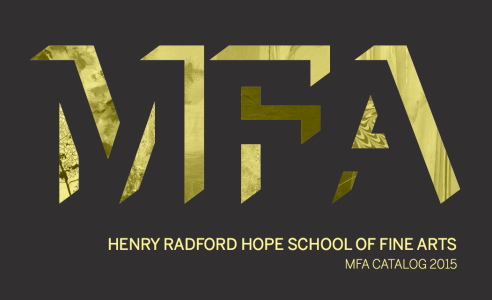
Henry Radford Hope School of Fine Arts
College of Arts and Sciences, Indiana University Bloomington
The Henry Radford Hope School of Fine Arts offers Masters of Fine Arts programs in Ceramics, Digital Art, Graphic Design, Metalsmithing and Jewelry Design, Painting, Photography, Printmaking, Sculpture and Textiles.
Hope Fund
In 1948, Henry Hope established the Hope Fund to create a collection of prints, photographs, drawings, and watercolors for the university that would lay the foundation for the permanent collection of the IU Art Museum.
Note: Later, the school was renamed the
Department of Studio Art
Tim F. Knight – Photographer and Illustrator
University of Washington, Seattle
Nature inspires me. I am fortunate to live by Lake Washington, where I can stroll along the beach, enjoy the lovely sights and sounds, while capturing photos of the lake and mountains.
Check out the inspiring view of Mt. Rainier at sunset, as seen from Colman Park, only three blocks from home.
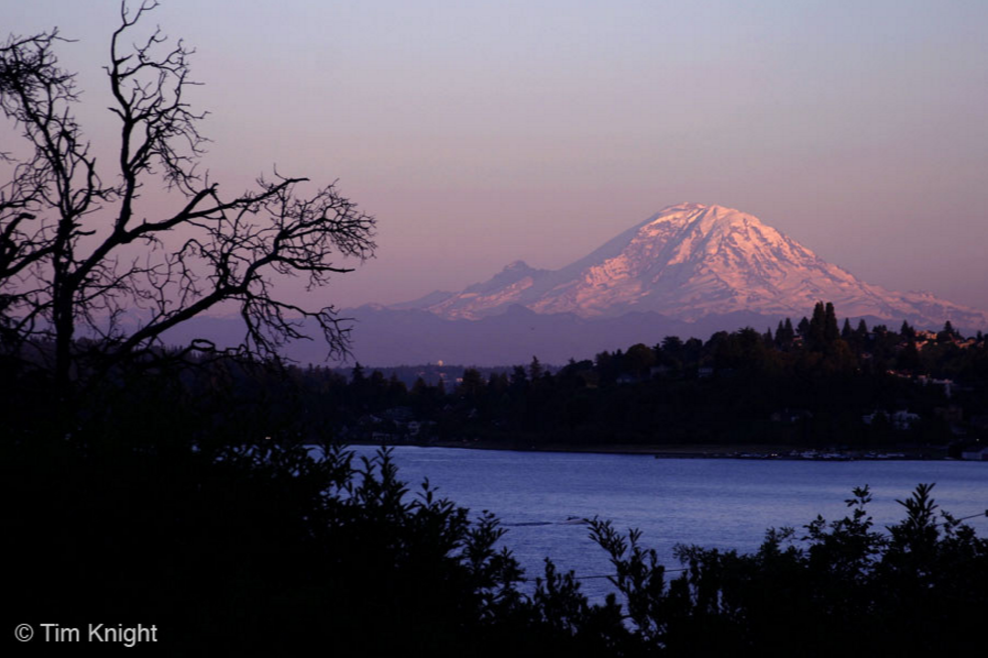
Inspiration
Initially, I studied biology in college, thinking that I would become a wildlife photographer, like Art Wolfe. Art publishes beautiful nature books, and his stunning wildlife photos are displayed throughout the REI store. Inspired by his work, I took on fieldwork in the mountains and coasts of Washington where I developed keen observation skills.
In the field, I observed rare spotted owls, hawks, deer, brown bears, mice, and tiny shrews – plus lots of insects, native birds and mammals. My journal was full of descriptions and sketches of my daily discoveries. Studying wildlife set the stage for a rewarding career in scientific research – documenting what I observed and recording patterns of behavior. I became a modern day Naturalist, using digital technology.
Back in Seattle, I watched majestic Bald Eagles flying overhead, and nesting in the local Seward Park by Lake Washington. Nature abounds in the Pacific Northwest.
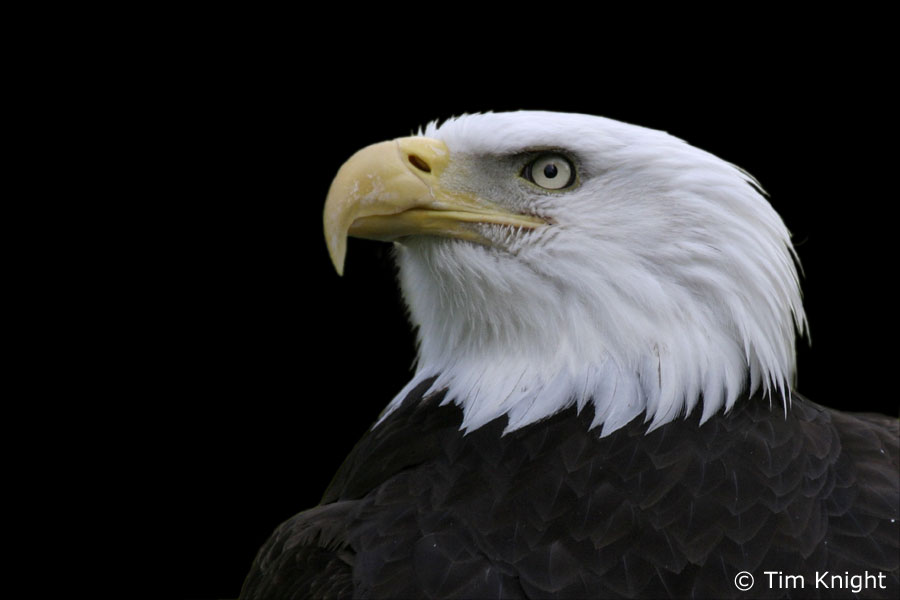
Biologist & Scientific Illustrator
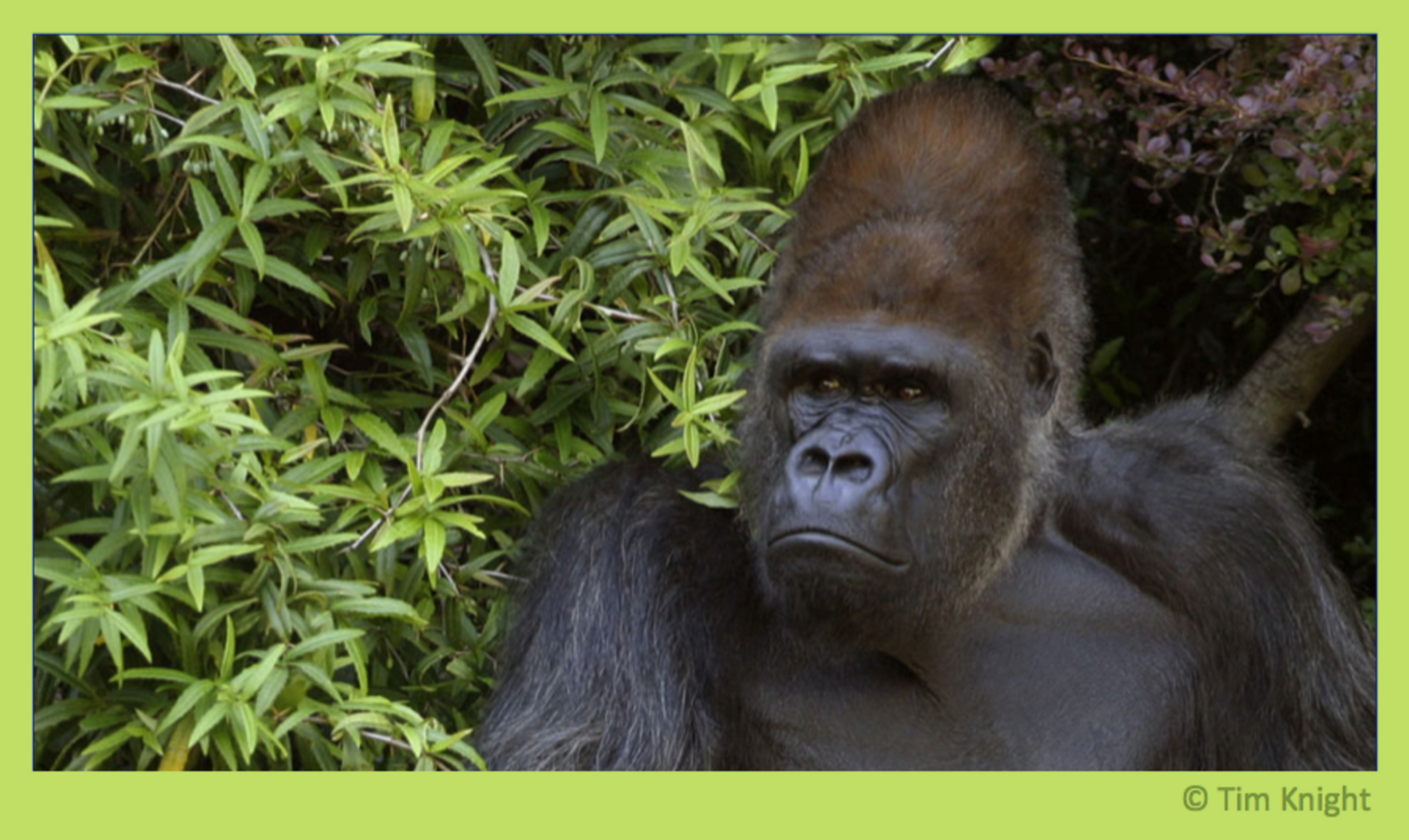
While working as a biologist, I started taking night classes at the University of Washington to learn scientific illustration techniques.
This was back in the traditional pen-and-ink days, before computer drawing programs where available. Using India ink got messy with my cats walking across the art table – before the ink was dry!
At the time, I was also volunteering at the zoo, on the weekends – leading tours and studying animal behavior.
I found that you can learn a lot by watching and sketching animals.
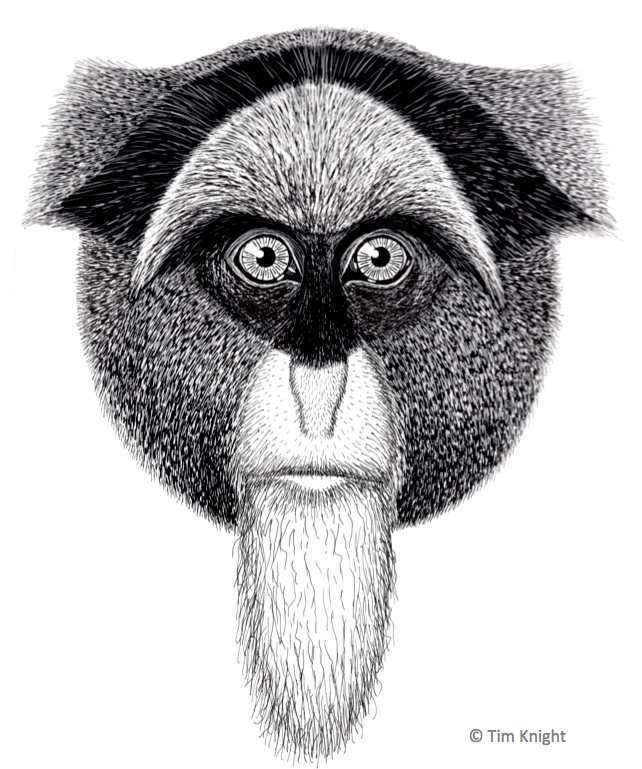
Sketching live animals helped me to improve my observation skills and document my research. The drawings made it easier to share my observations with other biologists.
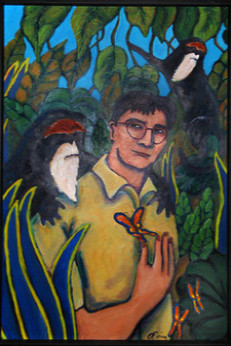
For a decade, I was the curator of The Primate Gallery – a web collection with photos and facts covering all living primate species. This long-term project began in 1995, and reach over 1 million web visitors around the world.
Watercolor Painting for fun
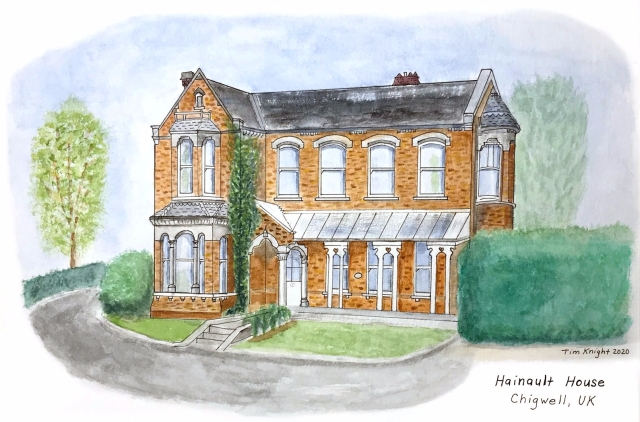
For Christmas in 2019, Linda gave me supplies for creating watercolor artwork. After watching tutorials on YouTube, I started experimenting with color mixing and learning brush strokes. The painting of Hainault House was created within three weeks of learning basic techniques. This watercolor painting was one of my first in 50 years – since childhood. You can learn a lot by watching artists paint, then experimenting on your own. It’s fun.
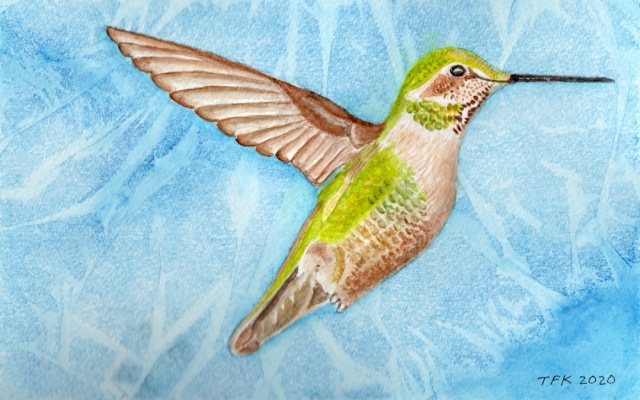
2020 Watercolor Sketchbook Series – created during the COVID-19 Pandemic
Birds of Mount Baker neighborhood – Nature in Art series
Watercolor artwork on Instagram
***
Artist Salary
Salary ranges can vary widely depending on many important factors, including education, certifications, additional skills, the number of years you have spent in your profession.
How much does a Full Time Artist make in the United States?
Bureau of Labor and Statistics: The median annual wage for “Fine Artists, Including Painters, Sculptors, and Illustrators” in May 2022 was $69,870. However, this includes those working in salaried positions, which may not be typical for many independent artists.
Salary.com: The average salary for a Full Time Artist is $65,029 per Year in the United States. The salary range for a Full Time Artist job is from $57,135 to $73,544 per year in the United States. (Nov 2023)
The five states where Full Time Artist jobs get higher salaries in the United States are: District of Columbia, California, New Jersey, Alaska, and Massachusetts.
The median annual Artist salary was $56,548 as of June 2021, but the range typically falls between $48,026 and $65,712 according to Salary.com.
Future outlook is positive
Overall employment of craft and fine artists is projected to grow 6 percent from 2021 to 2031, about as fast as the average for all occupations. Read more about Craft and Fine Artist – bls.gov
In 2017, there were about 247,000 art directors, fine artists and animators working in the USA.
Before Covid-19
As of 2018, the average U.S. household income was $87,864, while the median household income was $61,937. (Bureau of Labor and Statistics)
60% of artists have college degrees
Artists earn 10% to 15% more than the average American worker
Back in 2011:
The median salary for artists was $43,000, compared to the $39,000 averaged labor force as a whole. (Professionals, however, average $54,000.) Within the subdivisions of artists, architects come out the wealthiest—averaging around $63,000—while ‘other entertainers’ bring up the rear with $25,000. Women are earning $0.81 to the men’s dollar, a whole penny more than the general workforce’s $0.80 to the dollar. Furthermore, 6 in 10 artists have college degrees, compared with 1 in 3 over all. (source: 2011, NEC study)
No longer the starving artist…
“There was a time when becoming an artist meant devoting yourself to a starving, bohemian lifestyle, sleeping on a futon and burning your rejected works to stay warm. But artists should feel a little more encouraged now that a new study from the National Endowment for the Arts reveals that the artist lifestyle isn’t as conventional wisdom might have it.”
(Huffington Post, 1 Nov 2011)
A starving artist is an artist who sacrifices material well-being in order to focus on their artwork. They typically live on minimum expenses, either for a lack of business or because all their disposable income goes toward art projects.
References
Study Reveals Artists Have High Salaries 11/01/2011
New Report Reveals Findings on Artists (NEA, Apr 24, 2019)
NEA Announces New Research Note on Artists in the Workforce
Artists’ low income and status are international issues
by Susan Jones, 15 Jan 2015 The Guardian
Stephens College Costume Museum in Columbia, MO
Artist Salary in the United Statese – Salary.com
Are You Well-Paid? Compare your income to the average. (fool.com)
Photos are posted for educational non-profit use only. Top photo shows the Northern Shoveler – a watercolor paining by Tim Knight.

